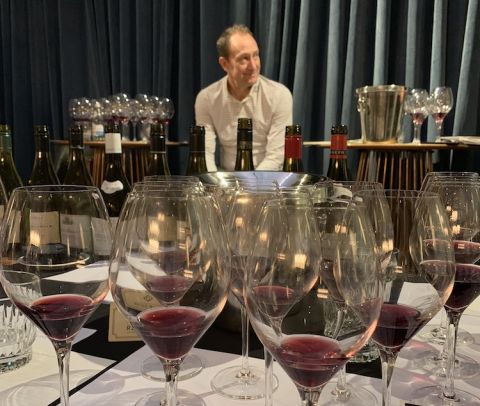From €24.50 (if you buy 6 bottles), $29.29 (2017 vintage), 2,960 Japanese yen, £27.45, AU$44.99, HK$315, SG$73 (2017 vintage)
Pitting your wine against its peers in a blind tasting is a well-worn technique, but that doesn't undermine its riskiness. The objective is normally to demonstrate that ostensibly better and/or pricier wines can be outshone by the underdog, and it's a favourite tactic of New World producers who want to prove that European originals don't have the monopoly on quality.
This may not have been the explicit intention at the recent Shaw + Smith Pinot Noir workshop I attended here in Singapore, but in my book it led to a notable victory for the 2018 vintage of their Adelaide Hills Pinot Noir.
Nine wines were poured, which I tasted completely blind. The list included admired Pinot Noirs from Sonoma, Central Otago and three respectable burgundies, including an Échezeaux. Three Shaw + Smith wines were included: two from Adelaide Hills plus their Tolpuddle from Tasmania.
I top-scored three wines at 17.5: the Californian (Peay, Scallop Shelf 2016), another Australian (Giant Steps, Applejack 2018), and the Shaw + Smith – which also happens to be the cheapest of the three.
For less than £30, here is a Pinot Noir that outranked some of the best names in Burgundy (whose blushes I will spare, although the most eagle-eyed of you may recognise some labels in the background of the photograph above, taken after the wines were revealed).
It is a stylish, powerfully scented style where the addition of 20% whole bunches in the fermentation has created the sort of stemmy, herbal and soy flavours that I particularly like in Pinot Noir. In fact, the style reminded me of Domaine de la Côte in California's Sta Rita Hills, which is about the highest accolade I can bestow. Beneath that aromatic complexity is sturdy, bright red fruit that drives the long finish and suggests there is ample cellaring potential.
At the same time, however, the wine is entirely ready to drink, with barely tangible tannins and juicy acidity on the finish. Furthermore, it would be a shame to lose such vivid primary fruit, so I would have no reservation in drinking this wine now.
The technical information provided tells me that the vineyard is a cool site at 500 m (1,640 ft) elevation, with an average vine age of 19 years. The grapes were hand picked, with extended maceration both before and after fermentation. Maturation in French oak 500-litre puncheons, of which 30% were new, lasted for ten months and the wine was left unfined and unfiltered.
The 2018 vintage seems to be widely available, although the US and Singapore are still working through the previous vintage.















